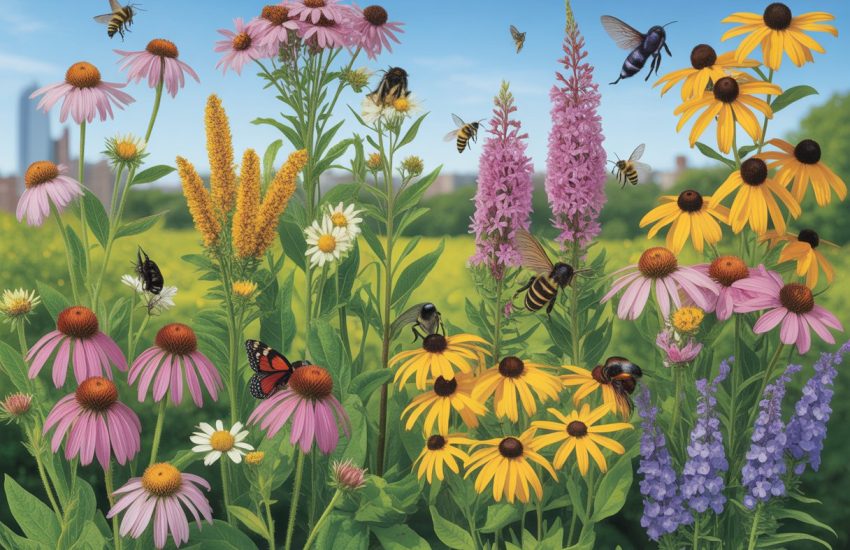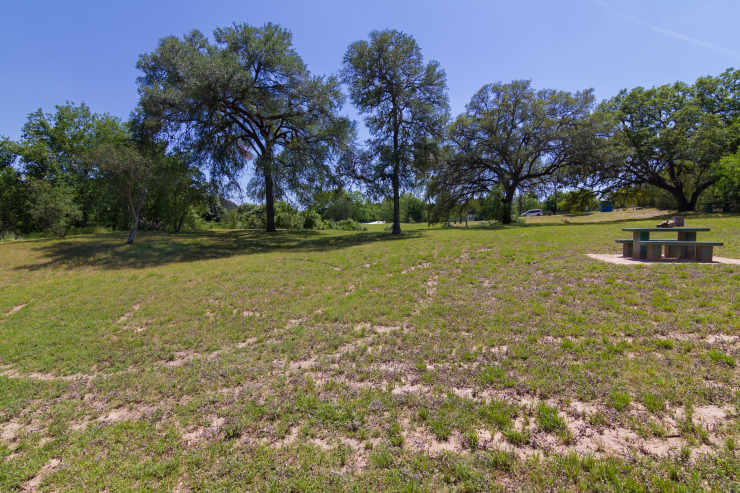How to Plant Onion Sets: A Step-by-Step Guide
Onion sets are a great way to grow onions in your garden. They are small, immature onions that have been grown for only one season. Planting onion sets is a quick and easy way to get a jump start on your onion crop. In this article, you will learn how to plant onion sets and get the most out of your onion harvest.

The first step in planting onion sets is to choose the right location. Onions need full sun and well-drained soil. Make sure the soil is loose and free of rocks, as onions need room to grow. It is also important to choose a location that has not been used for onions or other alliums in the past three years, as this can lead to disease problems. Once you have chosen the right location, it’s time to prepare the soil.
Selecting Quality Onion Sets

When it comes to planting onion sets, selecting the right ones is crucial for a successful harvest. Here are some tips on how to choose quality onion sets.
Understanding Onion Varieties
Onions come in different varieties, each with its own unique flavor and characteristics. The three main types of onions are yellow, white, and red onions. Yellow onions are the most commonly used, with a strong flavor and a high sugar content. White onions have a milder flavor and a firmer texture, making them ideal for salads and sandwiches. Red onions have a sweet and mild flavor and are often used in raw dishes.
Choosing the Right Size and Type
When selecting onion sets, size matters. The larger the onion set, the larger the onion it will produce. However, larger onion sets are also more prone to bolting, which means they will flower prematurely instead of producing a bulb. It’s best to choose medium-sized onion sets, which are less likely to bolt and will produce a good-sized onion.
It’s also important to choose the right type of onion set for your growing conditions. If you live in a cooler climate, choose long-day onion sets, which require 14-16 hours of daylight to grow properly. If you live in a warmer climate, choose short-day onion sets, which require 10-12 hours of daylight to grow properly.
In summary, selecting quality onion sets is essential for a successful onion harvest. By understanding onion varieties and choosing the right size and type of onion set, you’ll be on your way to growing delicious onions in your own backyard.
Preparing the Planting Site

Soil Requirements and Amendments
Before planting onion sets, it is important to prepare the soil properly. Onions prefer well-drained soil with a pH between 6.0 and 7.0. If the soil is too acidic, add lime to raise the pH level. If the soil is too alkaline, add sulfur to lower the pH level.
In addition to adjusting the pH level, adding compost or other organic matter can improve soil quality. This will help the soil retain moisture and provide necessary nutrients for the onion sets to grow. It is recommended to add a layer of compost or organic matter to the planting site and mix it into the top 6-8 inches of soil.
Optimal Location and Spacing
Onions require full sun for optimal growth, so choose a location that receives at least 6 hours of direct sunlight per day. It is also important to choose a location that has good air circulation to help prevent disease.
When planting onion sets, spacing is crucial. The sets should be planted 4-6 inches apart in rows that are 12-18 inches apart. This will allow the onions to have enough room to grow and develop properly. Planting too closely can result in smaller onions or even stunted growth.
By preparing the planting site properly, onion sets will have the best chance for success. Adjusting the pH level and adding compost or other organic matter can improve soil quality, while choosing the right location and spacing will provide the necessary conditions for optimal growth.
Planting Techniques for Onion Sets
Planting onion sets is an easy and efficient way to grow onions in your garden. Here are some planting techniques to ensure a successful onion harvest.
Correct Depth and Orientation
Onion sets should be planted with the pointed end facing up, at a depth of approximately 1 inch (2.5 cm) into the soil. Planting too shallow or too deep can affect the growth and yield of the onion. It is recommended to space the onion sets 4-6 inches (10-15 cm) apart.
Timing for Planting
Onion sets should be planted in the spring, as soon as the soil can be worked. The ideal soil temperature for planting onion sets is between 50-75°F (10-24°C). Planting too early in cold soil can result in slow growth and disease, while planting too late can result in smaller onions.
To ensure proper growth, it is important to keep the soil moist but not waterlogged. Mulching around the onion sets can help retain moisture and prevent weeds.
By following these planting techniques, you can enjoy a bountiful onion harvest in your garden.
Caring for Growing Onions

Watering and Nutrient Management
Onions require consistent moisture throughout the growing season, especially during bulb formation. Watering should be done deeply and frequently enough to keep the soil moist but not waterlogged. One inch of water per week is generally sufficient, but this may vary depending on weather conditions and soil type.
In terms of nutrient management, onions require a steady supply of nitrogen to promote growth and bulb development. A balanced fertilizer with a higher nitrogen content can be applied every 4-6 weeks during the growing season. Alternatively, organic options such as compost or manure can be used to provide a slow-release source of nitrogen.
Mulching and Weed Control
Mulching can help to conserve moisture and suppress weeds around onion plants. A layer of organic material such as straw, hay, or grass clippings can be applied around the base of the plants, taking care not to cover the bulbs themselves. This will also help to regulate soil temperature and prevent soil erosion.
Weed control is important to prevent competition for nutrients and water. Hand weeding or hoeing can be done regularly to remove any weeds that may be growing around the onion plants. Mulching can also help to suppress weed growth, but it is important to ensure that the mulch layer is not too thick, as this can prevent air circulation and lead to fungal diseases.
Overall, proper care and management of onion plants can lead to healthy growth and a bountiful harvest. By providing adequate water and nutrients, as well as implementing mulching and weed control practices, gardeners can ensure the success of their onion crop.
Harvesting and Storing Onions
Determining Onion Maturity
Onions are ready to harvest when the bulbs have reached maturity. The best way to determine if an onion is mature is by examining the tops. When the tops of the onion plants have started to dry and fall over, it is a sign that the bulbs have matured. Another way to check for maturity is by gently pushing the soil away from the top of the bulb and examining the neck of the onion. If it is soft and pliable, the onion is not yet mature. If the neck is firm and stiff, the onion is ready to be harvested.
Proper Techniques for Harvesting
When harvesting onions, it is important to use the proper techniques to avoid damaging the bulbs. To harvest the onions, use a garden fork or shovel to gently loosen the soil around the bulbs. Then, grasp the tops of the onions and gently pull them out of the ground. Be careful not to bruise or damage the bulbs as this can lead to rot during storage.
Storage Conditions and Practices
Proper storage conditions are essential for keeping onions fresh for an extended period. After harvesting, allow the onions to dry in a warm, dry, and well-ventilated area for a few days. This will help to cure the onions and prepare them for storage. Once the onions are dry, remove any excess dirt or debris and trim the tops and roots. Store the onions in a cool, dry, and dark location. Onions should be stored in a single layer or in mesh bags to allow for air circulation. Avoid storing onions near potatoes or other fruits and vegetables that produce ethylene gas, as this can cause the onions to spoil more quickly.
By following these simple tips for harvesting and storing onions, gardeners can enjoy fresh, flavorful onions throughout the year.
Frequently Asked Questions

What is the optimal spacing for planting onion sets?
Onion sets should be planted about 4 inches apart and 1 inch deep in the soil. This spacing allows enough room for the onion bulbs to grow without competing for nutrients and water.
What is the best month to plant onions in hardiness zone 5?
The best time to plant onion sets in hardiness zone 5 is in the early spring, around March or April. This allows the onions to grow during the cooler months and mature in the warmer months.
How can I ensure my onion bulbs grow to a larger size?
To ensure larger onion bulbs, make sure to provide adequate spacing between each onion set, water the plants regularly, and fertilize the soil with a balanced fertilizer. Additionally, removing any flower stalks that appear can redirect the plant’s energy towards bulb growth.
Is it necessary to soak onion sets before planting them?
Soaking onion sets before planting them is not necessary, but it can help speed up the germination process. Soaking them for about 30 minutes in water before planting can help soften the outer layer and encourage growth.
Can onion sets be planted directly into the ground without prior preparation?
Onion sets can be planted directly into the ground without prior preparation, but it is recommended to till the soil and add compost or other organic matter to improve the soil quality and provide necessary nutrients for the onions.
What are the steps to create my own onion sets for planting?
To create your own onion sets, allow onions to mature until the tops start to dry and the bulbs begin to split. Remove the tops and store the bulbs in a cool, dry place until the following spring. Plant the bulbs in the soil with the pointed end facing up, about 1 inch deep.


